Showing Spotlights 1337 - 1344 of 2784 in category All (newest first):
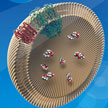 Every year, large quantities of antibiotics are released into lakes and rivers as a byproduct of their use in farming and medicine. Antibiotics in the environment can select for antibiotic-resistant bacterial populations, which can cause severe infections if they come into contact with humans or animals. In addition, antibiotics can disrupt the natural bacterial flora that plays a vital role in maintaining the balance of ecosystems. Scientists have now found that solar-powered proteoliposomes derived from bacteria can extract and store contaminants released into natural bodies of water,
Every year, large quantities of antibiotics are released into lakes and rivers as a byproduct of their use in farming and medicine. Antibiotics in the environment can select for antibiotic-resistant bacterial populations, which can cause severe infections if they come into contact with humans or animals. In addition, antibiotics can disrupt the natural bacterial flora that plays a vital role in maintaining the balance of ecosystems. Scientists have now found that solar-powered proteoliposomes derived from bacteria can extract and store contaminants released into natural bodies of water,
May 7th, 2013
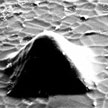 Most of the research efforts on developing synthesis methods for graphene has focused on flat substrates. However, direct growth of graphene layers on prepatterned substrates has remained elusive. In new work, resarchers have grown graphene in prepatterned copper-coated substrates, and they apply this protocol for the fabrication of MEMS devices, in particular, atomic force microscope probes. This layer of graphene improves the functionality of the probes by making them conductive and more resistant to wear.
Most of the research efforts on developing synthesis methods for graphene has focused on flat substrates. However, direct growth of graphene layers on prepatterned substrates has remained elusive. In new work, resarchers have grown graphene in prepatterned copper-coated substrates, and they apply this protocol for the fabrication of MEMS devices, in particular, atomic force microscope probes. This layer of graphene improves the functionality of the probes by making them conductive and more resistant to wear.
May 6th, 2013
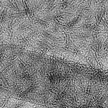 Integration of graphene and its functional derivatives into three-dimensional macroscopic structures is an essential step to exploit the advanced properties of graphene sheets for practical applications, such as chemical filters and electrodes for energy storage devices. In new work, researchers in Singapore report a facile, scalable, and solution-processable strategy to synchronously reduce and assemble graphene oxide sheets on metal surface into large scale chemically converted graphene films under ambient conditions. Compared with other techniques currently used to prepare large-scale graphene film, this novel processing is low-temperature with scalable and high-throughput capability.
Integration of graphene and its functional derivatives into three-dimensional macroscopic structures is an essential step to exploit the advanced properties of graphene sheets for practical applications, such as chemical filters and electrodes for energy storage devices. In new work, researchers in Singapore report a facile, scalable, and solution-processable strategy to synchronously reduce and assemble graphene oxide sheets on metal surface into large scale chemically converted graphene films under ambient conditions. Compared with other techniques currently used to prepare large-scale graphene film, this novel processing is low-temperature with scalable and high-throughput capability.
Apr 30th, 2013
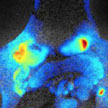 Scientists used a new type of biocompatible nanoparticle known as a 'porphysome' to detect and demarcate prostate tumors as small as 2mm in size. The tumors were imaged using a combination of positron emission tomography (PET) and optical imaging. PET allows doctors to detect, localize, and characterize prostate tumors non-invasively, while optical imaging allows them to find the edges of the tumor(s) during treatment. The porphysomes were also able to detect cancerous cells that had metastasized (spread) to the bone. This may allow doctors to find and treat cancer that has spread from the prostate to other parts of the body.
Scientists used a new type of biocompatible nanoparticle known as a 'porphysome' to detect and demarcate prostate tumors as small as 2mm in size. The tumors were imaged using a combination of positron emission tomography (PET) and optical imaging. PET allows doctors to detect, localize, and characterize prostate tumors non-invasively, while optical imaging allows them to find the edges of the tumor(s) during treatment. The porphysomes were also able to detect cancerous cells that had metastasized (spread) to the bone. This may allow doctors to find and treat cancer that has spread from the prostate to other parts of the body.
Apr 29th, 2013
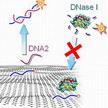 Carbon nanomaterials such as nanotubes or graphene not only are widely researched for their potential uses in industrial applications, they also are of great interest to biomedical engineers working on nanotechnology applications. These researchers found that incorporating carbon-based nanomaterials is effective not only as injectable nanoscale devices but also as components to enhance the function of existing biomaterials significantly. A recent article highlights different types of carbon-based nanomaterials currently used in biomedical applications.
Carbon nanomaterials such as nanotubes or graphene not only are widely researched for their potential uses in industrial applications, they also are of great interest to biomedical engineers working on nanotechnology applications. These researchers found that incorporating carbon-based nanomaterials is effective not only as injectable nanoscale devices but also as components to enhance the function of existing biomaterials significantly. A recent article highlights different types of carbon-based nanomaterials currently used in biomedical applications.
Apr 25th, 2013
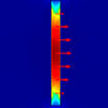 Nanoplasmonics and nanomechanics have been considered as two disparate fields. However, they both deal with waves of different nature. Nanoplasmonic antennas, or simply nanoantennas, are tiny optical analogs of radio-frequency antennas are resonators for light waves. On the other hand nanomechanical oscillators behave as resonators for acoustic waves. By integrating optical nanoantennas directly on a nanomechanical resonators, researchers have now shown that it is possible to achieve very efficient interactions between light and nanomechanical resonators. This hybrid approach enables novel functionalities in various applications.
Nanoplasmonics and nanomechanics have been considered as two disparate fields. However, they both deal with waves of different nature. Nanoplasmonic antennas, or simply nanoantennas, are tiny optical analogs of radio-frequency antennas are resonators for light waves. On the other hand nanomechanical oscillators behave as resonators for acoustic waves. By integrating optical nanoantennas directly on a nanomechanical resonators, researchers have now shown that it is possible to achieve very efficient interactions between light and nanomechanical resonators. This hybrid approach enables novel functionalities in various applications.
Apr 17th, 2013
 The fascination with two-dimensional (2D) materials that has started with graphene has spurred researchers to look for other 2D structures like for instance metal carbides and nitrides. A new, very comprehensive review article takes a look at our current knowledge of 2D materials beyond graphene. The paper outlines the different chemical classes of 2D materials and discuss the various strategies to prepare single-layer, few-layer, and multilayer assembly materials in solution, on substrates, and on the wafer scale.
The fascination with two-dimensional (2D) materials that has started with graphene has spurred researchers to look for other 2D structures like for instance metal carbides and nitrides. A new, very comprehensive review article takes a look at our current knowledge of 2D materials beyond graphene. The paper outlines the different chemical classes of 2D materials and discuss the various strategies to prepare single-layer, few-layer, and multilayer assembly materials in solution, on substrates, and on the wafer scale.
Apr 15th, 2013
 Computed tomography (CT) scans are an imaging method that use x-rays to create pictures of cross-sections of the body. Many CT scans involve intravenously injected iodinated contrast agents - but they have drawbacks such as fast clearance and side effects. Due to these limitations, nano-sized iodinated CT contrast agents have been developed that can increase the circulation time and decrease the adverse effects. In addition to iodine, nanoparticles based on heavy atoms such as gold, lanthanides, and tantalum are used as more efficient CT contrast agents.
Computed tomography (CT) scans are an imaging method that use x-rays to create pictures of cross-sections of the body. Many CT scans involve intravenously injected iodinated contrast agents - but they have drawbacks such as fast clearance and side effects. Due to these limitations, nano-sized iodinated CT contrast agents have been developed that can increase the circulation time and decrease the adverse effects. In addition to iodine, nanoparticles based on heavy atoms such as gold, lanthanides, and tantalum are used as more efficient CT contrast agents.
Apr 10th, 2013
 Every year, large quantities of antibiotics are released into lakes and rivers as a byproduct of their use in farming and medicine. Antibiotics in the environment can select for antibiotic-resistant bacterial populations, which can cause severe infections if they come into contact with humans or animals. In addition, antibiotics can disrupt the natural bacterial flora that plays a vital role in maintaining the balance of ecosystems. Scientists have now found that solar-powered proteoliposomes derived from bacteria can extract and store contaminants released into natural bodies of water,
Every year, large quantities of antibiotics are released into lakes and rivers as a byproduct of their use in farming and medicine. Antibiotics in the environment can select for antibiotic-resistant bacterial populations, which can cause severe infections if they come into contact with humans or animals. In addition, antibiotics can disrupt the natural bacterial flora that plays a vital role in maintaining the balance of ecosystems. Scientists have now found that solar-powered proteoliposomes derived from bacteria can extract and store contaminants released into natural bodies of water,
 Subscribe to our Nanotechnology Spotlight feed
Subscribe to our Nanotechnology Spotlight feed





